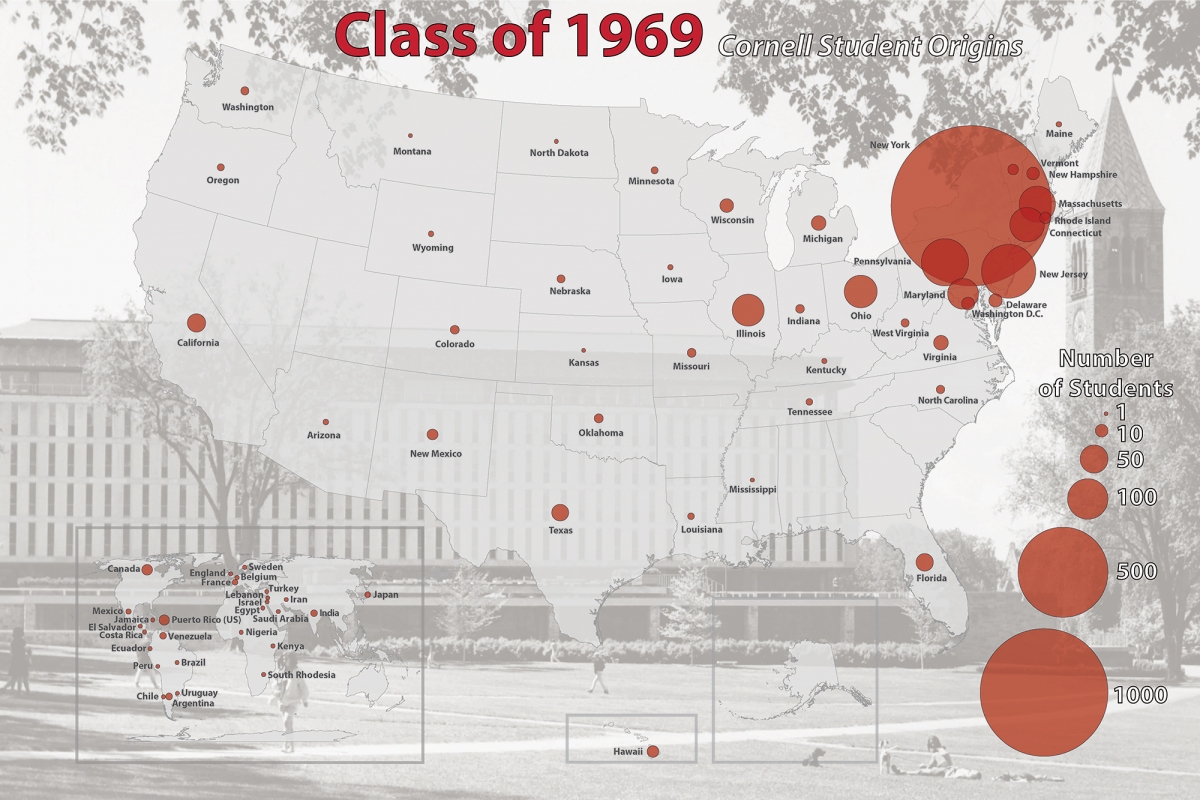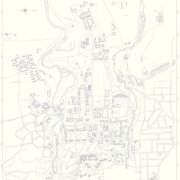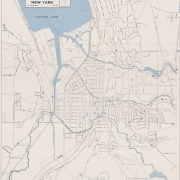

One of the largest freshman classes ever to enroll at Cornell arrived in 1965, the year of the University's centennial. Around 2,300 students entered the seven colleges. The class was composed of 1,670 men and 599 women. According to the Cornell Daily Sun, due to inadequate housing facilities, more women-freshmen could not be accepted. Over 300 new foreign students entered the university that year. Despite these numbers, the number of applications actually fell. Only two schools, the College of Agriculture, and the School of Hotel Administration, saw increase in the number of students who applied.

In 1962, an evaluation began of the existing physical facilities as well as preparation of preliminary campus development plans. Long-range planning was recognized as vital for a central campus that comprises over 800 acres, with land holdings exceeding 16,000 acres, and buildings valued at more than $135,000,000. By 1965-1966, together with the already completed Hughes Hall, Clark Hall, and Mallott Hall, plans were made for a building program costing almost $1,000,000,000. Only thumbnail image is available of this map due to copyright restrictions. The map can be viewed in the Map Room, Olin Library.

The 1965-66 Report of the President concludes that the Centennial Campaign and Celebration were very successful, and the university was able to turn its attention to “matters deferred by the Centennial preoccupations.” Construction continued at a high level, with nearly $30 million worth of work under way. A research wing for Baker Laboratory and the Noyes Student Center, among others, were completed by 1968. In all, the main campus in Ithaca comprised more than 90 major buildings on several hundred acres. Only thumbnail image is available of this map due to copyright restrictions. The map can be viewed in the Map Room, Olin Library.

Like other college towns, Ithaca was strongly influenced by Cornell. Not only was the University the biggest local employer, but students and faculty started to make up a sizable portion of the local population. Nevertheless, in the 1960s there was under-utilization of space downtown and increasing competition from shopping centers located outside the city. Faced with increasing downtown problems, the Common Council reacted by approving in 1964 phase one of the Center Ithaca Renewal Project, with priority given to parking and landscaping. In 1966, Historic Ithaca was created by concerned citizens in reaction to the demolition of the Cornell Library, the removal of the old City Hall, and the threats to other significant downtown structures. Only thumbnail image is available of this map due to copyright restrictions. The map can be viewed in the Map Room, Olin Library.